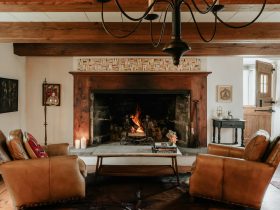Designing your home should be a rewarding and exciting experience – but even with the best intentions, it’s surprisingly easy to make mistakes that affect the overall comfort, function and aesthetic of a space.
Whether you’re renovating, redecorating or starting from scratch, being aware of common home design mistakes can help you create a space that’s not only beautiful but also practical and timeless.
1. Ignoring Natural Light
One of the most frequent design mistakes is not making the most of natural light.
Blocking windows with heavy furniture or dark curtains can make a room feel smaller and more oppressive.
Where possible, opt for lighter window treatments and place mirrors strategically to reflect light around the room. Good lighting transforms a home, it’s worth planning around it.
2. Choosing Style Over Function
A sleek designer sofa or an oversized coffee table might look fantastic online or in a showroom, but will it actually work for your lifestyle?
Prioritising appearance over practicality often leads to regret.
When selecting furniture and fittings, think about how the space will be used daily. Comfort, flow and ease of use are just as important as looks, if not more so.
3. Overcrowding the Space
Many homeowners fall into the trap of overfilling rooms with furniture, artwork and décor.
This can make even a large room feel cluttered and chaotic. Instead, embrace negative space.
Choose a few key pieces that serve both a functional and aesthetic purpose, and give them room to breathe. Less really can be more when it comes to design.
4. Neglecting Scale and Proportion
It’s vital to get the proportions right.
A tiny rug in a large living room, a bulky wardrobe in a compact bedroom, or a chandelier that hangs too low can all disrupt the visual balance.
Measure your space and consider how each piece will sit within it. Online tools and floor planners can be helpful here.
5. Using Too Many Colours or Patterns
While bold colours and patterns can add personality, too many can quickly become overwhelming.
A cohesive colour palette helps tie the rooms together and creates a sense of flow throughout the home.
That doesn’t mean everything needs to match but there should be harmony.
Accent colours and textures can add depth without becoming distracting.
6. Not Thinking Long-Term
Trendy designs might appeal in the short term, but can date quickly.
It’s wise to base your core design choices – such as flooring, kitchen cabinets, and tiles – on timeless elements that will age well.
You can then layer in trends through accessories, soft furnishings and wall art, which are easier and cheaper to update.
7. Poor Storage Planning
A beautifully designed home can be ruined by visible clutter.
One of the biggest mistakes is underestimating how much storage you’ll need.
Built-in wardrobes, under-bed storage, and multifunctional furniture like ottomans can help keep your space tidy and stylish.









Leave a Reply